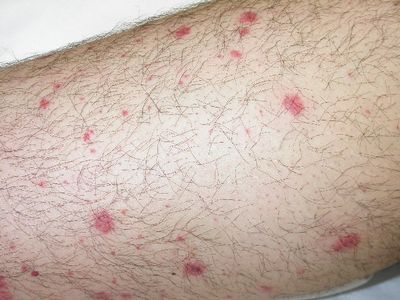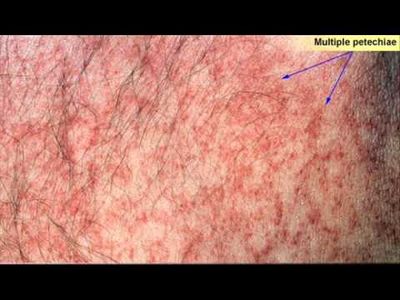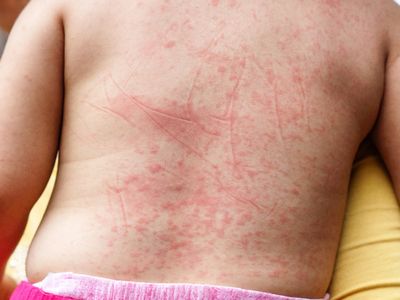Petechial rashes are small, pinpoint spots that first appear on the surface of the skin because of abnormal bleeding.

The blood causes the petechial rashes to appear reddish, brownish or purplish. Petechial rashes (puh-TEE-kee-ees) typically appear in clusters and can often look like an irritated rash. However, there are some cases where the petechial rashes do not contain blood at all. This type of rashes is called as non-hemolytic.
As the name suggests, petechiae is caused by a bacterium. There are different types of bacteria such as Streptococcus and Gardnerella which cause different types of infections. When these types of bacteria combine with keratin or dead skin cells, the result is a petechial rash. This bacterium is present in the surroundings of the human body. However, most people do not have any symptoms of this infection. Some people, however, are allergic to petechiae and develop a severe reaction upon coming into contact with the infected animal or human.
The petechiae appear because the bacteria cause the animal skin to become thick with oil. As a result, the skin becomes irritated, which causes the inflammation to spread from the site of infection to nearby areas. This reaction, commonly known as atopic dermatitis, is not always severe, but it can be quite painful and even scarring to the affected area.
Another common symptom is itching or irritation around the affected area. When petechiae occur in clusters, they cause a burning sensation.

This burning sensation is accompanied by pain and tenderness. Itching can become so severe that it causes discomfort and can even leave you unable to sleep.
Most petechial rashes appear as red circular blisters. They are usually located close to the nose, around the lips or on the eyelids. Petchiae often occur on both the face and neck as well. Petchiae can also appear as small pustules or lesions. Although betcha do not require immediate medical attention, there are certain situations where these rashes need to be treated for proper treatment.
Petchiae can be extremely annoying and embarrassing for the patient. Because of their size, they make it hard to go about your daily activities.
People who suffer from petechiae affects are advised to keep an eye on their skin regularly. If the petechiae remain untreated, they will continue to grow in size and cause a bigger problem. The condition worsens if they are not treated in time. Because petechiae can cause permanent damage, they should be treated immediately.
There are many different home remedies available for treating petechiae. However, it’s recommended that you consult with your doctor if you don’t want to buy medication or you would prefer to treat the disease naturally. Although home remedies are usually effective, there are other forms of treatments available in pharmacies and specialty stores.
Proper hygiene is a must in order to prevent petechiae.

You should wash your hands as soon as possible after touching any area of the body that may have petechiae, such as your face or mouth. Also, be sure to dry your face with a towel to prevent moisture from building up around the affected area. Make sure to avoid scratching as well, because this can worsen your petechiae.
Treating petechiae should be done on a regular basis. You can purchase over-the-counter medications that can help relieve the symptoms. and reduce the redness and irritation of petechiae. If you don’t want to buy medications, you can also try using antihistamines to relieve itching and irritation. Some people find that using natural petechiae treatments such as vitamin E and aloe vera gel can be helpful.
You may also be able to find more natural petechiae treatment options, such as steam baths, lotions and ointments. However, you should consult your doctor before trying any of these products. For example, some over-the-counter medication that contains salicylic acid can cause skin burns.
If your petechiae condition does not improve within the first week of treatment, you should seek help from a professional. If you do not have insurance, or if your insurance doesn’t cover petechiae treatments, then see your doctor. Your doctor will recommend an appropriate course of action to ensure that your petechiae condition is treated effectively and permanently. A qualified doctor can determine if your petechiae is caused by something more serious and can treat it more effectively.